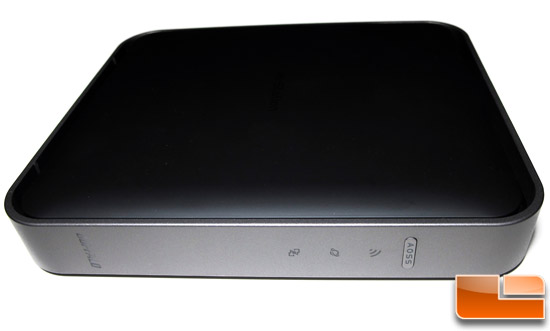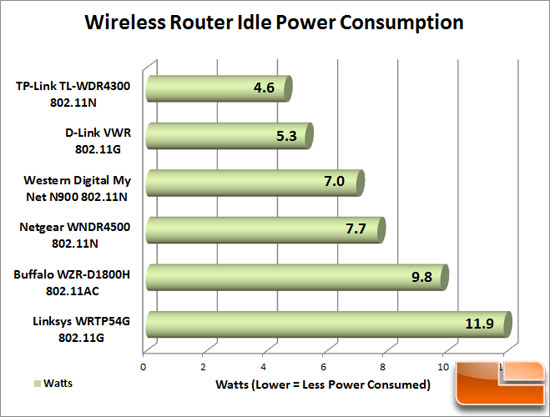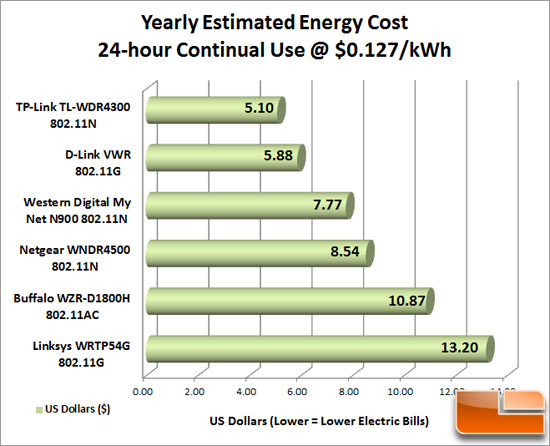Buffalo Air Station AC1300 N900 802.11ac Wireless Router Review
By
Buffalo Air Station AC1300 Power Consumption


Benchmark Results: The Buffalo WZR-D1800H consumes a fair amount of power that is only exceeded by the very old Linksys WRTP54G. From these numbers, it looks like the wireless 802.11ac routers might be a bit of a power-hog compared to “late-model” wireless-N only routers like the TP-Link who seem to be incredibly efficient when it comes to power.
Since most people will have their routers turned on for 24-hour a day operation, we think that examining power usage is an important benchmark. Total cost of ownership (TCO) is an important financial estimate that helps consumers direct and indirect costs of a product. In our TCO calculation we will be figuring up how much it costs to have a wireless router running per year in an idle state with the unit being installed 24-hours a day. We will be using 12.7 cents per kilowatt-hour (kWh) based on the bureau of labor statistics report from April 2012 showing that amount as the national average.


Comments are closed.